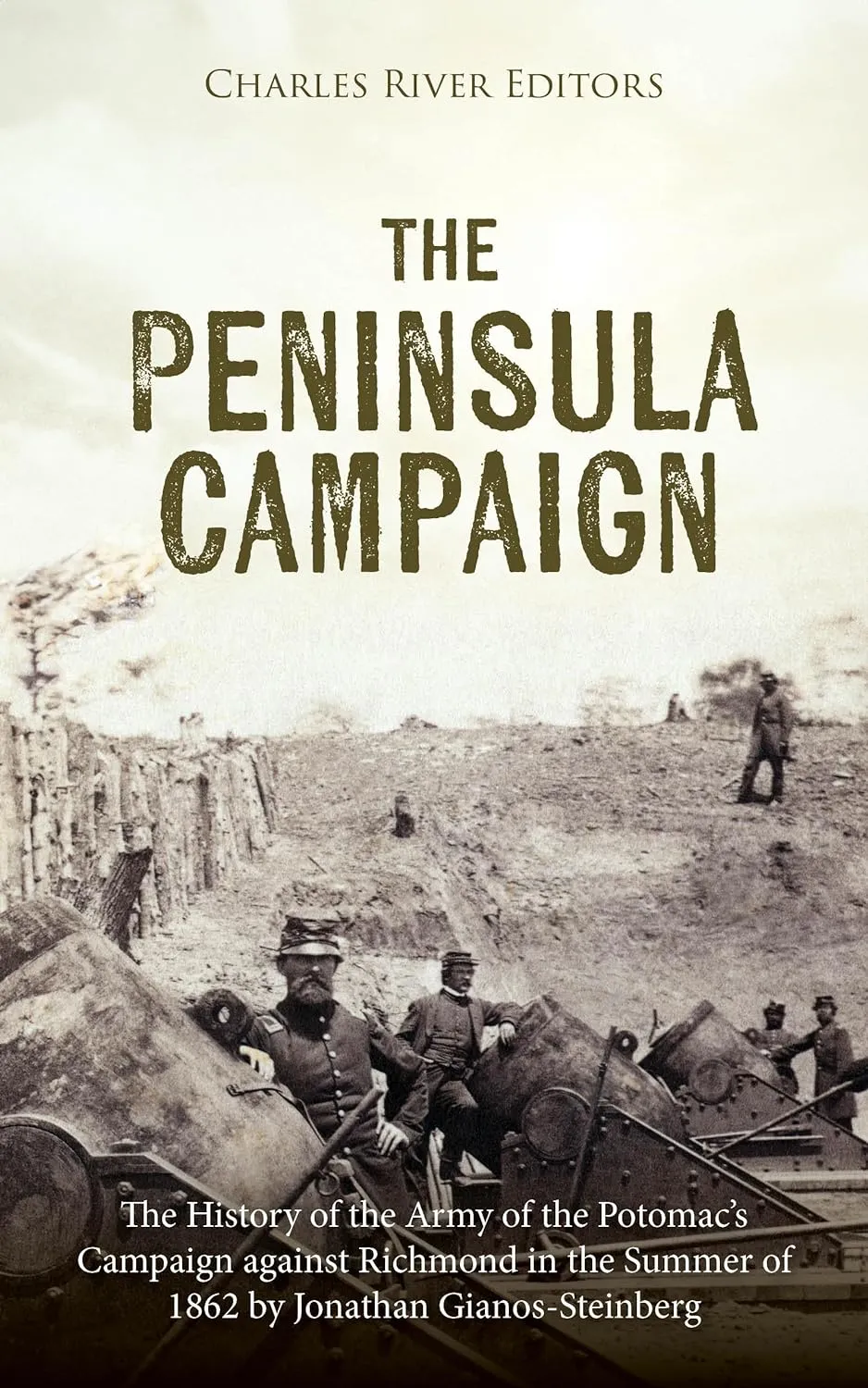The Peninsula Campaign: The History of the Army of the Potomac’s Campaign against Richmond in the Summer of 1862 by Jonathan Gianos-Steinberg, Charles River Editors
English | June 22, 2024 | ISBN: N/A | ASIN: B0D7T2PV9X | 106 pages | EPUB | 6.43 Mb
English | June 22, 2024 | ISBN: N/A | ASIN: B0D7T2PV9X | 106 pages | EPUB | 6.43 Mb
As Union commander George McClellan moved the Army of the Potomac up the Peninsula in early 1862, the Union army still had nearly double the manpower of his opponent, so Army of Northern Virginia commander Joseph E. Johnston continued to gradually pull his troops back to a line of defense nearer Richmond as McClellan advanced. In conjunction, the Union Navy began moving its operations further up the James River, until it could get within seven miles of the Confederate capital before being opposed by a Southern fort.
It was at this point that Johnston got uncharacteristically aggressive. Johnston had run out of breathing space for his army, and he believed McClellan was seeking to link up with McDowell’s forces. Moreover, about a third of McClellan’s army was south of the river, while the other parts of the army were still north of it, offering Johnston an enticing target. After a quick deluge turned the river into a rushing torrent that would make it impossible or the Union army to link back up or aid each other, Johnston drew up a very complex plan of attack for different wings of his army, and struck at the Army of the Potomac at the Battle of Seven Pines on May 31, 1862.
Like Union general Irvin McDowell’s plan for First Bull Run, the plan proved too complicated for Johnston’s army to execute, and after a day of bloody fighting little was accomplished from a technical standpoint. At one point during the Battle of Seven Pines, Confederates under General James Longstreet marched in the wrong direction down the wrong road, causing congestion and confusion among other Confederate units and ultimately weakening the effectiveness of the massive Confederate counterattack launched against McClellan. Johnston wrote in his memoirs, “The operations of the Confederate troops in this battle were very much retarded by the dense woods and thickets that covered the ground, and by the deep mud and broad ponds of rain-water, in many places more than knee-deep, through which they had to struggle.”
Having been seriously wounded, Johnston’s command was given the following day to military advisor Robert E. Lee. Lee subsequently pushed McClellan’s Army of the Potomac away from Richmond and back up the Peninsula through a flurry of battles in late June, only to then swing his army north to face a second Union army, John Pope’s Army of Virginia. Needing to strike out before the Army of the Potomac successfully sailed back to Washington and linked up with Pope’s army, Lee daringly split his army to threaten Pope’s supply lines, forcing Pope to fall back to Manassas to protect his flank and maintain his lines of communication. At the same time, it left half of Lee’s army (under Stonewall Jackson) potentially exposed against the larger Union army until the other wing (under James Longstreet) linked back up. Thus, in late August 1862, the Army of Northern Virginia and the Army of Virginia found themselves fighting over nearly the exact same ground the South and North fought over in the First Battle of Bull Run 13 months earlier. Ironically, the result of that battle would bring McClellan back to the fore, and in the ensuing weeks, the Battle of Antietam would take place.



